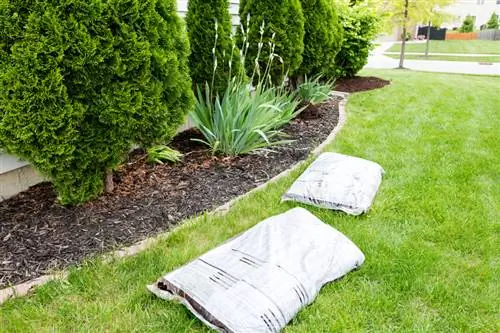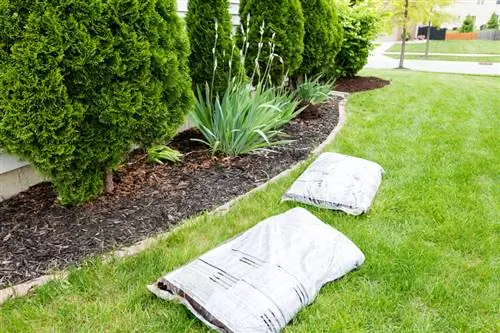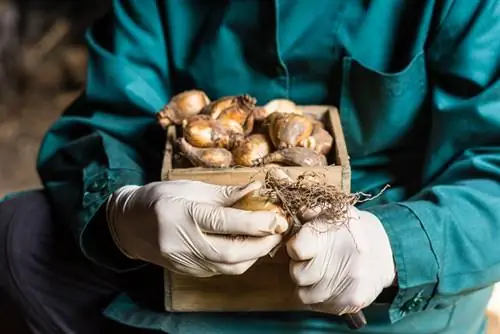- Author admin [email protected].
- Public 2023-12-16 16:46.
- Last modified 2025-01-23 11:20.
Bluebells (Campanula) are available in numerous different species and cultivars, although not all of them are hardy. Native bellflowers such as the meadow bellflower or the lady's bellflower are particularly suitable for cultivation in the garden. All other species require winter protection outdoors.

How can I overwinter my bluebell successfully?
To overwinter bluebells, frost-sensitive outdoor species should be covered with winter protection such as fir branches. Potted bluebells, on the other hand, require a frost-free, cool and dark room with temperatures up to a maximum of 10 °C.
Overwintering depends on the species
The bluebells native to Mediterranean countries in particular have difficulty withstanding frosty temperatures and should therefore be provided with appropriate winter protection in winter. This can, for example, consist of a thick layer of fir or spruce branches. However, some varieties that are actually perennial or naturally annual do not need to be overwintered because they can be sown again every year. Potted bluebells, on the other hand, should always overwinter frost-free, but cool and dark. The temperature is ideally a maximum of 10 °C. If the winter is mild, the balcony bluebells can also be overwintered outside, but should be brought indoors as soon as the temperatures fall well below 0 °C.
Tips & Tricks
If you have no possibility of overwintering in the house (e.g. a sufficiently cool room). then place the potted bluebells on a piece of Styrofoam and place them on a warm house wall. You can also wrap the pot and plant with a warming material (e.g. raffia mats).






